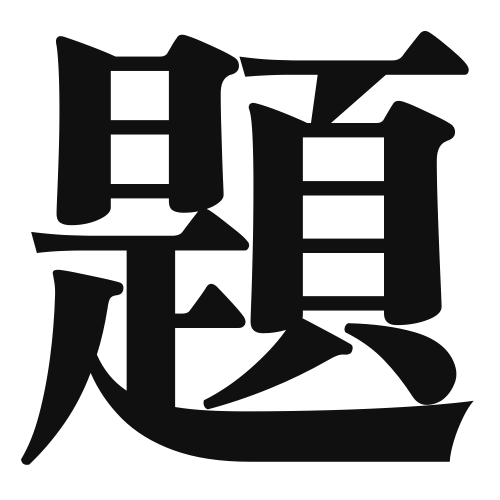1. Overview of Meaning
The kanji “題” (dai) generally means “title,” “topic,” or “subject.” It is often used to refer to the title of a book, article, or any other written work, as well as the subject matter of a discussion or presentation.
2. Formation and Radicals
The kanji “題” is a compound character, which means it is formed by combining different elements. It is classified as a phonetic-ideographic character (形声文字), where the left part (題) provides a hint about the meaning, while the right part indicates the pronunciation.
The radical of “題” is 題, which is also the entire character. This radical is associated with topics and titles.
3. Examples of Usage
Common words and phrases that include “題” are:
- 題名 (だいめい, daimei) – title
- 問題 (もんだい, mondai) – problem or question
- テーマ (てーま, tēma) – theme
Example sentences in daily conversation:
- この本の題名は何ですか? (このほんのだいめいはなんですか?) – What is the title of this book?
- 次の問題について話しましょう。 (つぎのもんだいについてはなしましょう。) – Let’s talk about the next topic.
4. Synonyms and Antonyms
Similar kanji with related meanings include:
- テーマ (てーま, tēma) – theme, which is often used in a more abstract sense compared to “題.”
- 項目 (こうもく, kōmoku) – item, which refers to a specific point or entry.
Antonyms include:
- 無題 (むだい, mudai) – untitled, which indicates the absence of a title or subject.
5. Cultural and Historical Background
The kanji “題” has significant relevance in Japanese culture, especially in literature and academia. It is commonly used in the titles of books, articles, and academic papers.
Proverbs and idiomatic expressions that include “題” are:
- 題にする (だいにする, dai ni suru) – to make something a topic of discussion.
- 題材 (だいざい, daizai) – subject matter, often used in the context of art or literature.
